Welcome to your guide on vascular skin conditions! We’re diving deep into these often mysterious and sometimes misunderstood skin issues. Vascular skin conditions are a variety of disorders that occur due to abnormalities in the blood vessels in the skin. They can be as benign as a few spider veins on the face or as serious as rosacea that can impact your quality of life. This blog post aims to shed light on these conditions, help you identify their symptoms, understand their causes, and guide you through the treatment options.
The Science Behind Vascular Skin Conditions
Before we delve into the specifics of different vascular skin conditions, it’s crucial to understand the role of blood vessels in our skin. Our skin, the body’s largest organ, contains a vast network of small blood vessels that provide nutrients to the skin cells, regulate body temperature, and play a part in healing and immune responses.
When these blood vessels work as they should, you likely won’t even notice them. But when things go awry, various skin conditions can pop up. The causes of vascular skin conditions can vary greatly. They can be due to genetic predispositions, changes in hormone levels, sun damage, aging, or certain medical conditions.
Different Types of Vascular Skin Conditions
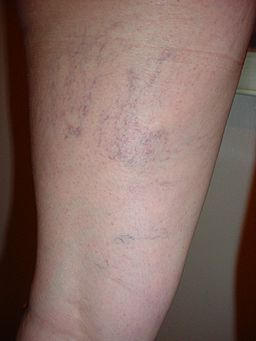
There’s a broad range of vascular skin conditions out there. Let’s take a quick glance at some of the most common ones:
- Telangiectasias (Spider Veins): Tiny, thin veins visible just under the skin’s surface, often appearing on the face or legs.
- Varicose Veins: Enlarged, twisted veins usually occur in the legs and can cause discomfort.
- Hemangiomas: A benign tumor of excess blood vessels often present at birth.
- Rosacea: A chronic skin condition causing redness, visible blood vessels, and sometimes, small red bumps.
- Purpura: Purple-colored spots and patches occur when small blood vessels burst, causing blood to pool under the skin.
- Port Wine Stains: A type of birthmark that appears as a large, flat, pink, red, or purple mark and is caused by an excess of capillaries.
- Angiomas: Small, benign tumors that consist of blood vessels, appearing as red or purple bumps on the skin.
Symptoms and Diagnosis
Vascular skin conditions can present a variety of symptoms, depending on the specific disorder. Common signs include visible veins, discoloration, skin thickening, sores, rashes, or growths. Some conditions may also cause discomfort, itching, or bleeding.
Diagnosis of vascular skin conditions usually involves a physical examination. Still, a doctor may also utilize diagnostic tests such as ultrasounds, biopsies, or other imaging to confirm a diagnosis and rule out any underlying health conditions.
In-depth Look at Specific Vascular Skin Conditions
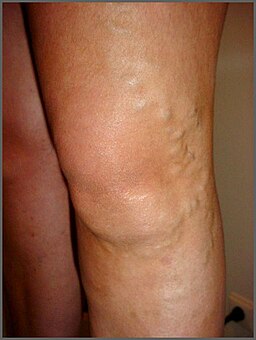
- Telangiectasias (Spider Veins): These often occur due to aging, sun exposure, or hormonal changes. They’re usually harmless but sometimes indicate a more serious condition like rosacea. Treatment options often include laser therapy, sclerotherapy, or electrocautery.
- Varicose Veins: These are caused by weakened valves in the veins, often due to genetic factors, obesity, pregnancy, or long periods of standing. Symptoms can include aching pain, itching, or skin discoloration. Treatment can range from lifestyle changes like exercise to medical procedures such as vein stripping or endovenous laser therapy.
- Hemangiomas: These benign tumors are often present at birth and usually fade without treatment. However, if they interfere with vision or breathing, treatment options include corticosteroid medications, laser treatment, or surgical removal.
- Rosacea: This chronic condition’s cause is unknown, but triggers can include hot drinks, spicy foods, alcohol, temperature extremes, and stress. Symptoms include redness, visible blood vessels, and red, pus-filled bumps. Treatment usually involves a combination of skincare, lifestyle changes, and prescribed medications.
- Purpura: This condition can be caused by a lack of platelets, certain medications, or a weakened blood vessel wall. It often presents purple patches or dots on the skin. Treatment depends on the underlying cause and may resolve itself without intervention.
- Port Wine Stains: These birthmarks are caused by excess capillaries and are often present at birth. While they’re usually harmless, they can sometimes be associated with conditions like Sturge-Weber syndrome. Treatments can include laser therapy to lighten the color.
- Angiomas: These benign growths can appear anywhere on the body, often red or purple. They’re caused by an overgrowth of blood vessels but are usually harmless. Treatment is often unnecessary unless they cause discomfort or cosmetic concerns, in which case, laser therapy or surgical removal may be considered.
Treatment Options for Vascular Skin Conditions
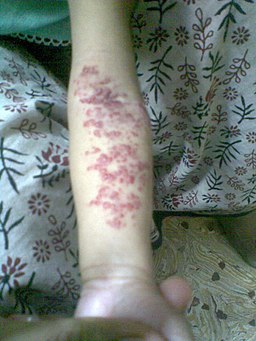
Now that we’ve covered the specifics of each condition let’s talk about treatment options. For many vascular skin conditions, the first line of treatment often involves lifestyle changes or over-the-counter solutions. This could include wearing sunscreen, maintaining a healthy weight, or using gentle skincare products.
Your doctor might recommend prescription medications or procedures if these don’t provide relief. These can range from topical creams to oral medications, laser treatments, sclerotherapy, or surgical procedures. The treatment chosen will depend on your condition’s severity, overall health, and potential side effects.
Prevention Strategies
While some vascular skin conditions are due to genetics and can’t be prevented, others can be managed with certain strategies:
- Lifestyle Changes: Regular exercise, maintaining a healthy weight, and avoiding standing or sitting for extended periods can help reduce the risk of varicose veins.
- Sun Protection: Using sunscreen, wearing protective clothing, and avoiding peak sunlight hours can help prevent telangiectasias and benefit those with rosacea.
- Skincare Routine: Gentle skincare products can help manage rosacea symptoms and other vascular skin conditions. Avoiding irritants like harsh cleansers, alcohol-based products, and extreme temperatures can also be beneficial.
The Impact of Vascular Skin Conditions on Quality of Life
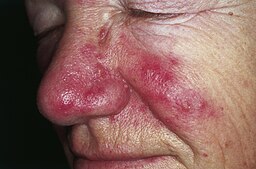
Vascular skin conditions can affect more than just your skin. They can impact your overall well-being, both physically and emotionally:
- Physical Effects: Some vascular skin conditions can cause discomfort or pain. Varicose veins, for example, can lead to aching or feelings of heaviness in the legs.
- Emotional and Psychological Effects: Visible skin conditions can also impact self-esteem and mental health. For instance, rosacea can cause embarrassment or anxiety, affecting social interactions or professional life.
- Importance of Seeking Treatment: Given these potential impacts, seeking medical advice is crucial if you suspect you have a vascular skin condition. The right treatment can help manage symptoms, improve your skin’s appearance, and boost your overall quality of life.
Myths and Misconceptions About Vascular Skin Conditions
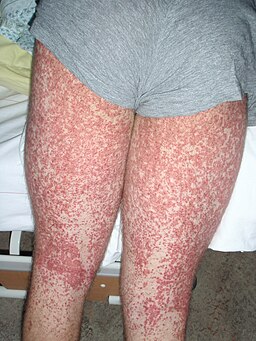
Many misconceptions about vascular skin conditions can cause unnecessary worry or prevent people from seeking help. Let’s debunk some of these myths:
- Myth: Varicose veins are only a cosmetic issue. Fact: While varicose veins can be unsightly, they can also cause discomfort and lead to more serious conditions like ulcers or blood clots if left untreated.
- Myth: Only elderly people get spider veins or varicose veins. Fact: While these conditions are more common with age, they can affect individuals of any age, depending on risk factors like genetics, pregnancy, and lifestyle.
- Myth: Men don’t get rosacea. Fact: Although rosacea is more common in women, men can get it, too, often with more severe symptoms.
- Myth: Vascular skin conditions are contagious. Fact: These conditions are not contagious as they are caused by underlying issues with blood vessels, not by bacteria or viruses.
Frequently Asked Questions (FAQs)
What causes vascular skin conditions?

Various factors can cause these conditions, including genetics, sun exposure, aging, hormonal changes, obesity, and certain medications.
Are vascular skin conditions dangerous?
Most of these conditions are harmless, but some, like varicose veins, can lead to complications if left untreated. It’s always best to consult a doctor if you suspect you have a vascular skin condition.
Can diet affect vascular skin conditions?
Yes, certain foods can trigger flare-ups in conditions like rosacea. A healthy diet can also support overall skin health.
How are vascular skin conditions diagnosed?
Diagnosis typically involves a physical examination, but a doctor may also use diagnostic tests such as ultrasounds or biopsies to confirm a diagnosis and rule out underlying health conditions.
Can vascular skin conditions be cured?
While some conditions may improve over time or with treatment, others can be chronic and require ongoing management. However, most can be effectively managed with medical treatments and lifestyle changes.
Do all vascular skin conditions require treatment?
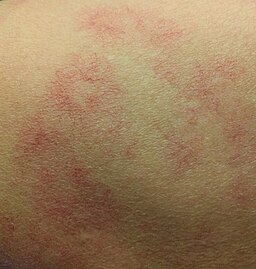
Not all vascular skin conditions require medical treatment. Some, like spider veins or cherry angiomas, are harmless and only treated if they cause discomfort or cosmetic concern. However, conditions causing symptoms or potential complications should be evaluated and treated by a healthcare provider.
Can lifestyle changes prevent vascular skin conditions?
While not all vascular skin conditions can be prevented, lifestyle changes like regular exercise, a healthy diet, sun protection, and good skincare practices can help manage symptoms and reduce the risk of developing certain conditions.
Does stress impact vascular skin conditions?
Yes, stress can trigger or worsen certain conditions like rosacea. Therefore, employing stress management techniques can be beneficial.
Are vascular skin conditions hereditary?
Some vascular skin conditions, like varicose veins or port-wine stains, can have a genetic component. You may be at a higher risk if you have a family history of a particular condition.
Can vascular skin conditions indicate other health problems?
In some cases, yes. For instance, spider veins can sometimes indicate blood circulation issues, and certain types of purpura can be associated with underlying conditions like vasculitis or a platelet disorder. Therefore, it’s always essential to seek medical advice if you notice changes in your skin.
Support and Resources
Living with a vascular skin condition can be challenging, but you’re not alone. There are numerous resources and support groups available, both online and offline. These can provide valuable information, practical advice, and emotional support.
- Dermatologist or Healthcare Provider: Always your first point of contact for any skin concerns. They can provide accurate information, diagnose conditions, and develop a treatment plan tailored to your needs.
- Online Forums and Support Groups: Platforms like the American Academy of Dermatology or the National Rosacea Society offer forums where you can connect with others who understand your experiences.
- Counseling or Therapy: If your condition impacts your mental health, seek professional help. Therapists can provide strategies to cope with anxiety or self-esteem issues related to your skin condition.
Conclusion
Vascular skin conditions encompass various disorders, from common spider veins to rare birthmarks. While some are merely cosmetic concerns, others can impact your health and quality of life. Understanding these conditions, recognizing them, and seeking medical advice are crucial steps to managing them effectively.
Remember: Your skin is just one aspect of who you are. Don’t let a skin condition define you or limit your potential. You can manage skin conditions and live a healthy, fulfilling life with the right knowledge and resources.
References
- Mayo Clinic. Rosacea.
- American Skin Association. Skin Health and Skin Diseases.
- MedlinePlus. Vascular Diseases.
- medical news today. Vascular disease